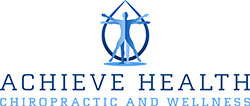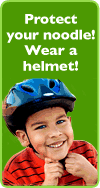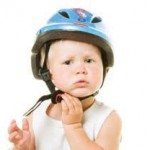Have A Safe Summer! | Prevent Sports Injury
With spring in full swing, everyone is out doing their favorite activities. While you’re enjoying the pleasures of the warm weather, it’s important to be prepared to keep yourself and your loved ones out of harm’s way. Most children enjoy outdoor activities—swimming, biking, camping and more. It’s a time when injuries ranging from playground falls and sunburns to accidents at the pool and the beach are more likely to occur.
Sports and Recreation Safety
Sports and Recreational Safety
Key Facts
- More than 38 million children and adolescents participate in sports each year in the U.S.
- Nearly three-quarters of U.S. households with school-age children have at least one child who plays organized sports.
- Each year, more than 3.5 million children ages 14 years and under receive medical treatment for sports injuries.
- Approximately two-thirds of all sports-related injuries leading to emergency department visits are for children.
The rate and severity of sports-related injury increases with a child’s age.
- From 2001 through 2009, it is estimated that there are 1,770,000 emergency department visits, 6 percent of these for traumatic brain injuries, among children ages 14 and under for injuries related to sports or recreation.
- Though rare, traumatic brain injury is the leading cause of sports-related death.
- Approximately one out of five traumatic brain injuries among children are associated with participation in sports and recreational activities.
- More than 90 percent of sports-related concussions occur without the loss of consciousness.
- The most common types of sport-related injuries in children are sprains (mostly ankle), muscle strains, bone or growth plate injuries, repetitive motion injuries, and heat-related illness.
- In 2009, more than 365,000 children ages 14 and under were treated in emergency departments for either football or basketball-related injuries.
Where, When and How
- Most organized sports-related injuries (62 percent) occur during practice rather than games.
- A national survey revealed that approximately 27 percent of parents often do not take the same safety precautions during their child’s practice as they would for a game.
- Collision and contact sports are associated with higher rates of injury, however, injuries from individual sports tend to be more severe.
- Each year, approximately 715,000 sports and recreation injuries occur in school settings alone.
- The four activities with the most injuries to bones and muscles include bicycling, basketball, football and roller sports. These four sports lead to 1.5 million medically treated injuries among children ages 5 to 14.
- It is estimated that up to 50 percent of injuries seen in pediatric sports medicine are related to overuse.
- For children ages 8 to 13, the rate of sports-related concussions was highest for football and ice hockey players, when taking into account participation rates.
- Among children ages 14 and under, the top five sports associated with head injuries include: cycling (40,272 injuries), football (21,878 injuries), baseball and softball (18,246 injuries), basketball (14,952 injuries) and skateboards/scooters (14,783 injuries).
- For males, the highest risk of concussion in organized sports is from football, while among females, soccer and basketball are the sports with the highest risk.
Enjoy The Great Outdoors But Put Safety First!
Whether your kids are elite athletes or just shooting hoops in the driveway, there are steps you can take to keep your kids in the game and free from injury.
Whether you are riding a bicycle, in-line skates, skateboard, scooter, an ATV or dirt bike, wearing a helmet should be an automatic habit. Helmets should fit properly and also be fastened correctly. A properly-fastened and fitting helmet does not move around on the head.
Summertime means activities and fun under the sun! But even if we love to spend time outdoors in the sun, we must all be careful not to let a sports or personal injury spoil the day.
Obviously, we all as parents want what’s best for our children. We want them to be happy and most importantly, we want them to be safe and healthy. That means making chiropractic checkups as a regular part of their health care routine.
The helmet should be approved by the American National Standards Institute (ANSI), the American Society for Testing and Materials (ASTM), the US Consumer Product Safety Commission (CPSC). Approved helmets meet stringent safety standards.




